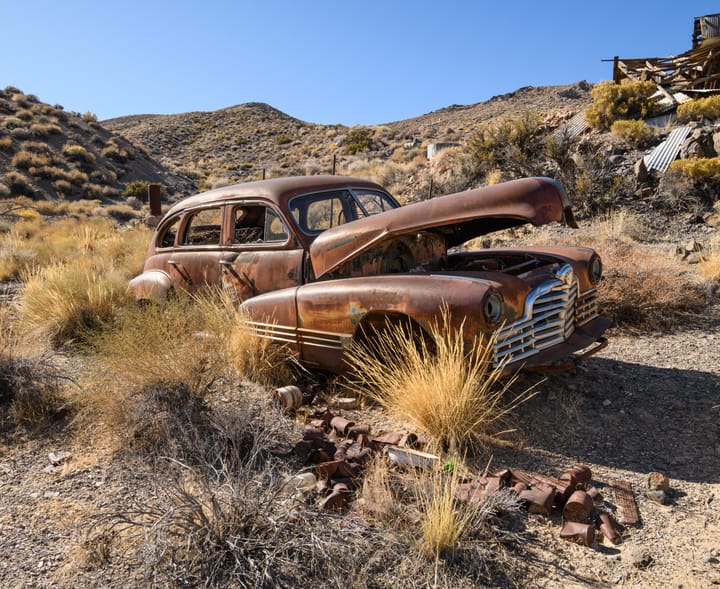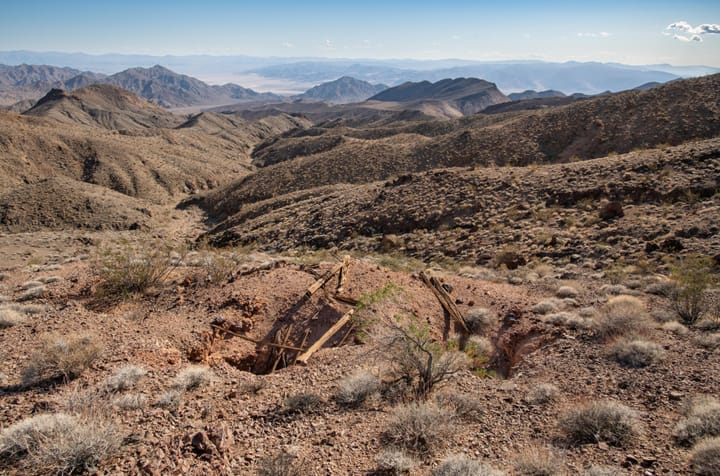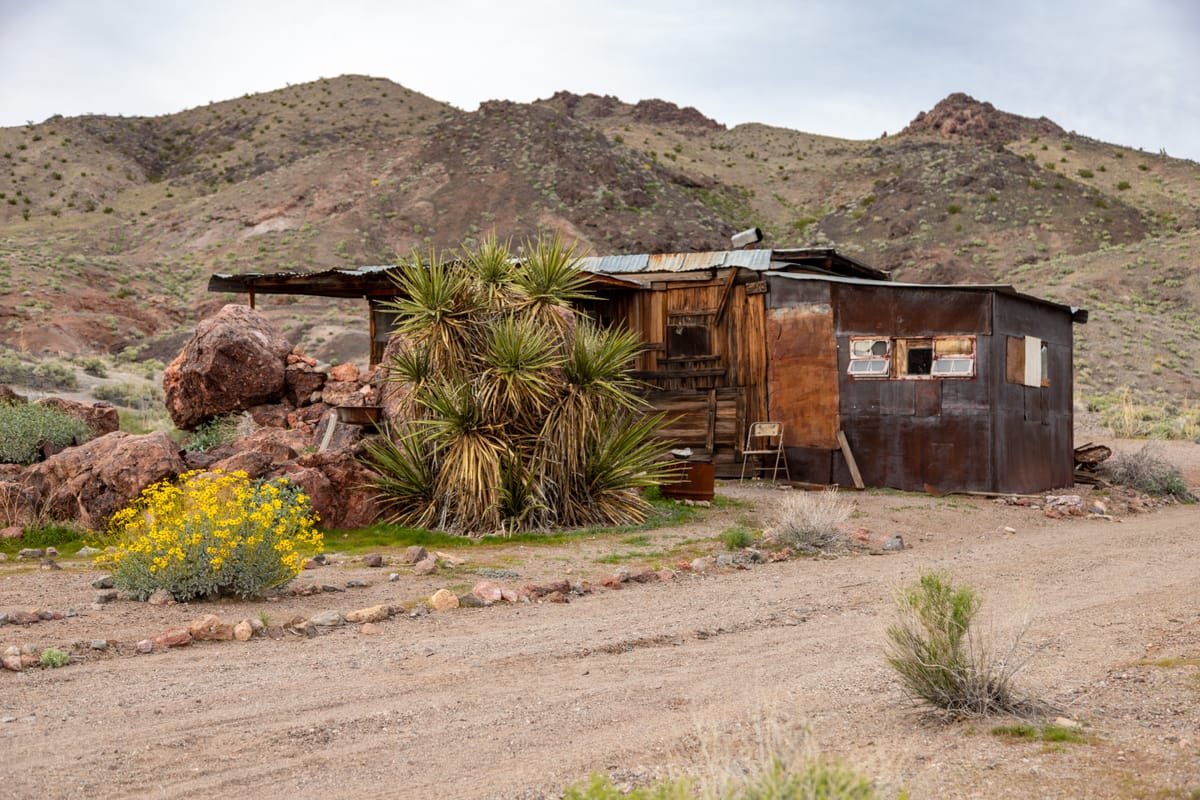In 1886, Albert G. Rhodes and his partner discovered a promising silver deposit in the hills behind the spring that would come to bear his name. They extracted and transported 1,200 pounds of ore, worth approximately $800, before meeting a tragic fate on a return trip to the mine. Rhodes, along with a group of investors, vanished into the vast Mojave Desert somewhere between Daggett and the mine, never to be heard from again. The mystery deepened when Rhodes' cousin, who set out to relocate the lost mine in 1894, also disappeared without a trace.
Read next

Greene Denner Drake Mill
Tucked away in a small canyon just off of Emigrant Canyon/Wildrose Road, on the slopes of the northern Panamint Mountains at 5,020 feet elevation, sits the Greene-Denner-Drake Mill. Forever in the shadow of its more famous neighbor, Skidoo, this quiet spot sees few visitors. This little camp contains

Graham Mine
Prospectors flooded into the southern Black Mountains during the Greenwater mining boom of the early 1900s, scouring every canyon and wash. The Rhodes Spring area as well as Virgin Spring Canyon saw intermittent activity, with limited productive mining resulting (See Lost Rhodes Mine). The remote location with its subsequent high

Greenwater Canyon Petroglyphs
The Greenwater Petroglyphs comprise two distinct sites scattered along Greenwater Canyon in Death Valley. Etched into the Pleistocene-era Funeral formation basalt and volcanics, these ancient markings represent a significant Great Basin Abstract rock art collection in the California desert region. One thing that makes this site particularly remarkable is the
